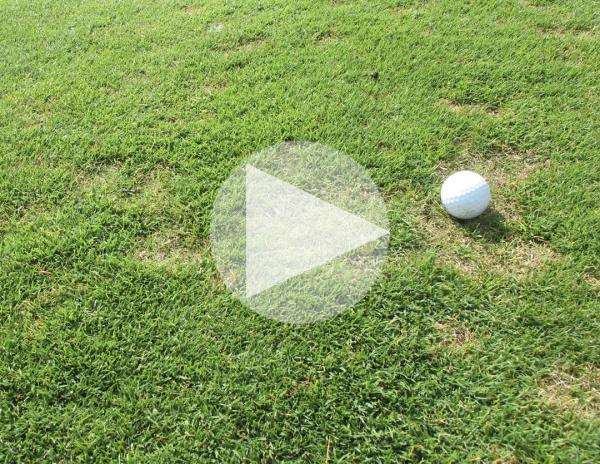Beating an old disease foe is going to require a new way of thinking. That was take-home message in a recent TurfNet University Webinar by Rick Latin, Ph.D., plant pathologist at Purdue University.
 Reliance on fungicides is the rule, not the exception when it comes to managing dollar spot. Over the past several years, however, many of the older chemistries, including DMI fungicides and iprodione, have developed resistance issues with the dollar spot pathogen, Sclerotinia homoeocarpa. Likewise, modern management practices often can reduce fungicide efficacy.
Reliance on fungicides is the rule, not the exception when it comes to managing dollar spot. Over the past several years, however, many of the older chemistries, including DMI fungicides and iprodione, have developed resistance issues with the dollar spot pathogen, Sclerotinia homoeocarpa. Likewise, modern management practices often can reduce fungicide efficacy.Maximizing fungicide effectiveness, Latin said, means incorporating other methods to reduce disease pressure. That includes incorporating things such as cultural practices and the use of biological products that can "help" reduce the threat of dollar spot.
"So, if we can use our knowledge and our skill to reduce disease pressure by attacking these different aspects (that influence fungicide efficacy)," Latin said during the Webinar presented by BASF, "we can get more effective and efficient use out of our fungicides."
Dollar spot is an old disease that is active throughout most of the growing season. And it has been a challenge for golf course superintendents for decades. Although it seems to be more aggressive in its behavior today than several years ago, it actually hasnt changed much, Latin said. What has changed are management practices that make turf more susceptible and threaten the efficacy of fungicides.
"I always get the question about how has dollar spot changed over time; it seems so much more aggressive, so much more severe when it does occur," Latin said during the webinar presented by BASF.
"When we look at the isolates, look at the cultures, they look the same. We can pull some from the '70s and some that are current and they look kind of the same. What isnt the same is management practices."
When Latin was in turf school in the 1970s, fairways were maintained at cutting heights of up to an inch and native soil greens were mowed as high as 0.375, with nitrogen applications as high as 6 pounds.
Turf that is mowed much lower and maintained with much less N is more susceptible to the disease. Throw in a host of other factors that influence fungicide efficacy and the result is a disease that is becoming more of a challenge thanks to manmade issues rather than evolution by the pathogen.
"More fungicide is required for control when disease pressure is high," Latin said.
"When we reduce diseases pressure, fungicides and fungicide programs work more efficiently."
Cultural practices that can help maximize fungicide efficiency include mowing less often and rolling more and increased fertility applications. It also includes mowing in the morning and removing morning dew to dry the leaf blade.
"All fungi require free moisture for infection," he said. "If we can influence that by even a few hours we can turn something that might be a serious problem to something that is more or less of a nuisance."
Fungicide resistance also is a barrier to dollar spot management. This affects many of the older chemistries, especially single-site penetrants such as iprodione and DMI class fungicides.
Newer chemistries like SDHIs and multi-site inhibitors including chlorothalonil and fluazinam are better options today, but should be used in a program to guard against future resistance issues.
"(T)he likelihood that a pathogen strain is going to evolve to the point of resistance to chlorothalonil is as close to zero as we can get in biology," Latin said.
"Now we have SDHIs. What have we learned from handling those older compounds that we can use to preserve the SDHI (class) for a longer period of time?"

